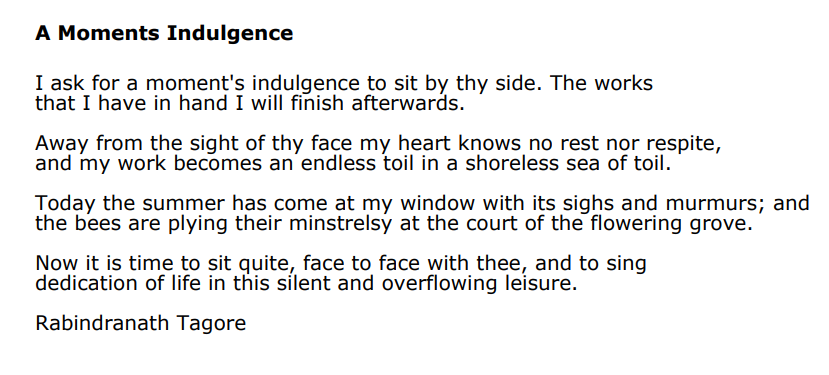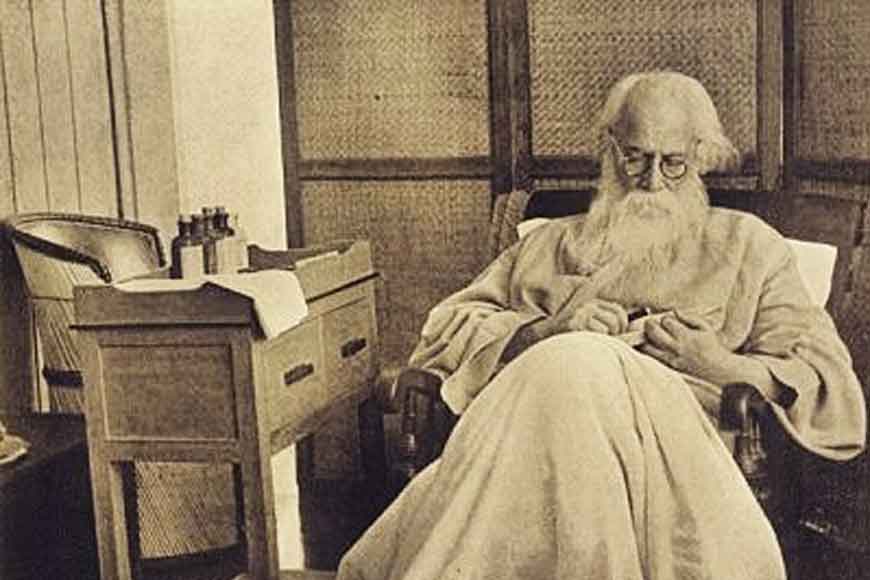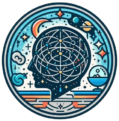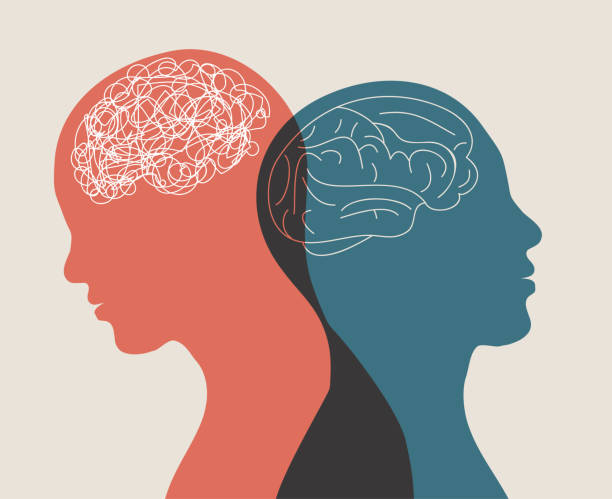Poet Who Touched the Soul
Rabindranath Tagore—poet, philosopher, painter, and polymath—was not only the first non-European to win the Nobel Prize in Literature (1913) but also a silent pioneer in exploring the psychology of well-being long before modern science gave it a name. His work transcends mere literary merit—it sings the soul’s longing for beauty, harmony, and meaning. Long before “positive psychology” became a field of academic inquiry, Tagore was already composing symphonies of the human spirit that resonated with joy, purpose, and inner peace.
1. Tagore and the Beauty of the Everyday
Tagore’s aesthetic worldview sees beauty not as luxury but as necessity. In his view, beauty is “the expression of the eternal in the things that change.” His poetry elevates ordinary moments—rustling leaves, birdsong, children playing—into sacred experience.

In positive psychology, this aligns with the concept of “savoring”, which refers to the capacity to attend to and appreciate positive experiences (Bryant & Veroff, 2007). Tagore’s lyrical attention to natural beauty—like in Gitanjali—fosters mindfulness, gratitude, and presence, all of which contribute to psychological well-being (Kabat-Zinn, 1994).
“The butterfly counts not months but moments, and has time enough.”
– Rabindranath Tagore
Tagore’s art teaches us to slow down, to feel, to be. The sensory richness of his verse—colors, textures, fragrances—activates what psychologist Mihaly Csikszentmihalyi called “flow”, a state of joyful immersion in the present (1990). In reading or listening to Tagore, we often experience this flow—a gentle mental alignment, a harmony with life itself.
2. The Spiritual Aesthetic: Beyond Religion
Unlike rigid religiosity, Tagore’s spirituality is a vast, inclusive force that connects individuals to a universal rhythm. He found the divine in beauty, in creativity, in the act of communion with the world. In The Religion of Man (1931), he writes of a “spiritual unity” that binds all things.

This mirrors the psychological concept of transcendence, one of the core character strengths in the VIA Classification of Strengths (Peterson & Seligman, 2004). Transcendence—whether through awe, gratitude, or appreciation of beauty—is correlated with increased life satisfaction, resilience, and emotional well-being.
“Where the mind is without fear and the head is held high… into that heaven of freedom, my Father, let my country awake.”
– Gitanjali, Poem 35
Tagore’s spirituality fosters what psychologist Barbara Fredrickson (2001) calls “broaden-and-build” emotions—feelings like awe and love that expand our awareness and build psychological resources. His poetry invites a transcendence of the ego, where we shift from “I” to “we,” from individual suffering to universal connection.
3. Art as Therapy: Tagore’s Creative Healing
Tagore not only wrote about art; he lived it. He painted, composed over 2000 songs (Rabindra Sangeet), and built an educational institution, Santiniketan, that merged nature, art, and freedom. He saw creativity as a form of healing—an insight echoed today in art therapy and expressive arts therapies used in clinical psychology.
Psychologists like Shaun McNiff (2004) argue that artistic expression helps individuals process trauma, express repressed emotions, and find a sense of purpose. Tagore, grieving deeply after the death of his wife and children, turned to painting in later life. His visual art is raw, abstract, and intensely personal—a testament to creativity’s therapeutic power.
“The world speaks to me in colors, my soul answers in music.”
– Tagore
This idea—art as an answer to suffering—resonates with Viktor Frankl’s existential psychology. In Man’s Search for Meaning (1946), Frankl emphasizes the human drive for purpose even amid pain. Tagore, too, teaches that even in sorrow, one can create beauty—and in doing so, heal.
Read More- Eco-Anxiety
4. Harmony with Nature: Ecopsychology in Tagore’s Vision
His’s relationship with nature was not merely poetic but profoundly psychological. He believed nature was the best teacher, healer, and companion. Santiniketan’s open-air classrooms reflect this view, designed to dissolve the boundaries between child and cosmos.

Today, ecopsychology and nature-based therapies confirm that nature exposure reduces stress, boosts mood, and improves attention (Kaplan & Kaplan, 1989). Tagore was centuries ahead when he wrote:
“Trees are the earth’s endless effort to speak to the listening heaven.”
In The Crescent Moon, his poems for children, he links natural wonder with emotional security, fostering what attachment psychologists today call secure base behavior—a foundation for confidence, curiosity, and resilience.
5. Educational Freedom: Fostering Flourishing Minds
Tagore’s school at Santiniketan rejected rote learning and authoritarianism in favor of play, exploration, and inner development. His pedagogy matches what modern psychologists like Carl Rogers and Abraham Maslow later promoted: learner-centered education that fosters self-actualization.

Maslow’s hierarchy of needs culminates in self-actualization—the fulfillment of one’s potential through creativity, purpose, and growth. He designed education to do just that. He believed that the soul of education is the education of the soul.
“Don’t limit a child to your own learning, for he was born in another time.”
– Tagore
His ideal student was not a memorizer but a seeker of truth, a co-creator of beauty. The well-being that arose from such education was not merely academic—it was emotional, social, and spiritual.
Read More- Savouring
Anticipating Positive Psychology
Positive psychology, the scientific study of what makes life worth living, emphasizes strengths, meaning, engagement, and positive emotion (Seligman & Csikszentmihalyi, 2000). Without using these terms, Tagore nurtured all of them:
- Positive Emotion: His poems cultivate joy, love, serenity.
- Engagement: He encouraged creative immersion—painting, writing, music.
- Relationships: His worldview was deeply relational—community, empathy, shared humanity.
- Meaning: Every stanza, song, and sketch sought meaning in the human experience.
- Accomplishment: His life’s work reflected mastery and contribution.
He embodied the PERMA model of flourishing before it had a name.
Tagore’s Legacy for the Modern Mind
Rabindranath Tagore was more than a poet—he was a psychologist of the soul. His fusion of beauty, art, and spiritual depth offers a timeless prescription for psychological well-being. In a world of burnout, distraction, and isolation, his vision reminds us to:
- Find wonder in the everyday,
- Connect with nature,
- Create as a form of healing,
- Seek meaning in beauty,
- Educate for the heart, not just the mind.
Tagore’s legacy is not just in museums or bookshelves—it lives in every moment we choose joy, harmony, and soulful connection.
References
Bryant, F. B., & Veroff, J. (2007). Savoring: A New Model of Positive Experience. Psychology Press.
Csikszentmihalyi, M. (1990). Flow: The Psychology of Optimal Experience. Harper & Row.
Fredrickson, B. L. (2001). The role of positive emotions in positive psychology: The broaden-and-build theory of positive emotions. American Psychologist, 56(3), 218–226.
Kabat-Zinn, J. (1994). Wherever You Go, There You Are: Mindfulness Meditation in Everyday Life. Hyperion.
Kaplan, R., & Kaplan, S. (1989). The Experience of Nature: A Psychological Perspective. Cambridge University Press.
McNiff, S. (2004). Art Heals: How Creativity Cures the Soul. Shambhala.
Peterson, C., & Seligman, M. E. P. (2004). Character Strengths and Virtues: A Handbook and Classification. Oxford University Press.
Seligman, M. E. P., & Csikszentmihalyi, M. (2000). Positive psychology: An introduction. American Psychologist, 55(1), 5–14.
Tagore, R. (1913). Gitanjali. Macmillan.
Tagore, R. (1931). The Religion of Man. George Allen & Unwin.
Tagore, R. (1915). The Crescent Moon. Macmillan.
Subscribe to PsychUniverse
Get the latest updates and insights.
Join 3,022 other subscribers!
Niwlikar, B. A. (2025, May 9). The Mind in Harmony: Tagore’s 5 Synthesis of Aesthetic Experience and Psychological Well-being. PsychUniverse. https://psychuniverse.com/tagore-and-psychological-well-being/




Pingback: 4 Important Ways to Celebrate Guru Purnima Mindfully - PsychUniverse